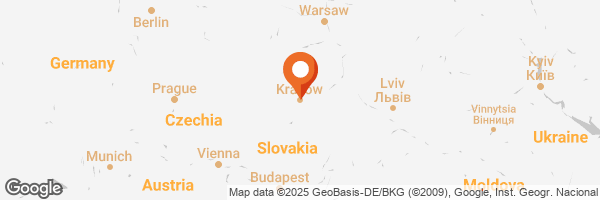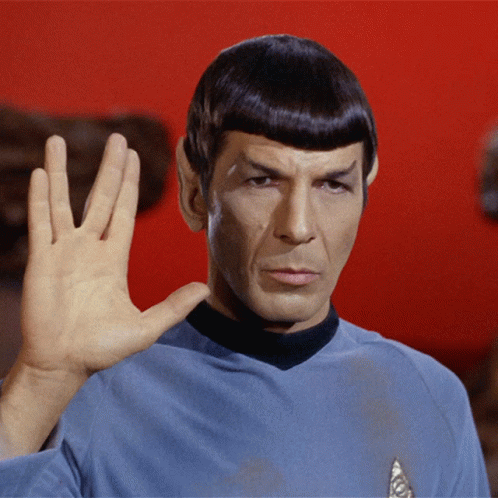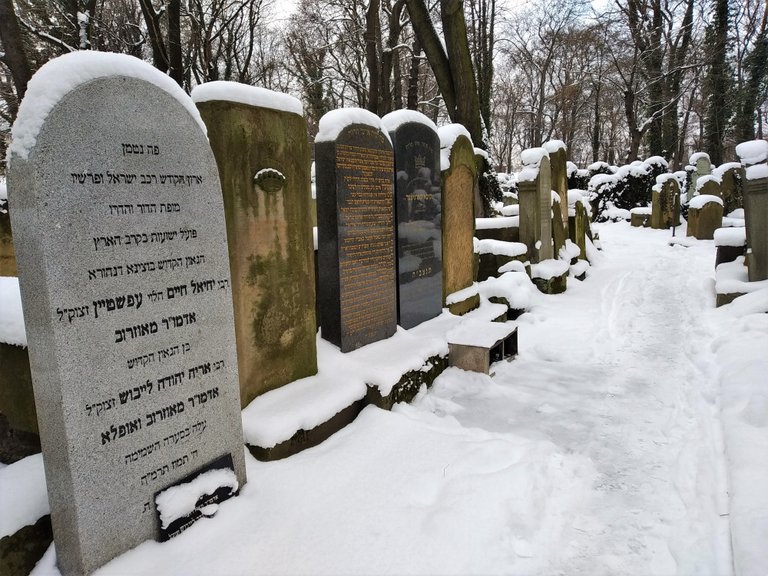Hello, dear friends!
Shabbat Shalom! 🕊️
What does this phrase mean? No, I'm not Jewish, but this is a good start to today's topic.
This is a traditional greeting that you can hear in Jewish families and communities. “Shabbat” literally means “Saturday” in Hebrew - the holy day of the week, according to the Torah. This word comes from the Hebrew verb “lishbot” and means “to stop work”/“to rest”. And the word “Shalom” in Hebrew means peace (although, in fact, it has dozens of meanings, but this is the key one). When we say “Shabbat Shalom” we wish each other a peaceful Saturday. This phrase is also used in Jewish communities during Shabbat instead of “hello”, “goodbye” or “have a nice day”.
But where was I?
I really like old cemeteries and not just Jewish ones. But the latter are special because of their tombstones. Religion forbids Jews from depicting people. Therefore, in ancient times, the portrait of the deceased, their habits, character, profession, lineage, and position in his community were "encrypted" with various symbolic images.
Do you like puzzles? Today I have for you not just a bunch of encrypted messages from passed centuries. They are also highly artistic stone carvings. Let's solve them together. My hubby and I got some experience during travels around west of Ukraine. In Ukraine, old Jewish cemetery was called Kirkut, and the traditional tombstone is Matzevah or Matzevot.
Matzevah or Masseba is a term used in the Hebrew Bible for a sacred pillar, a type of standing stone.
The New Jewish cemetery in Kraków (Kazimierz)
One day, while wandering aimlessly around Kazimierz, we saw this sign with a route on the street corner. "Jewish Heritage Route" was its name.
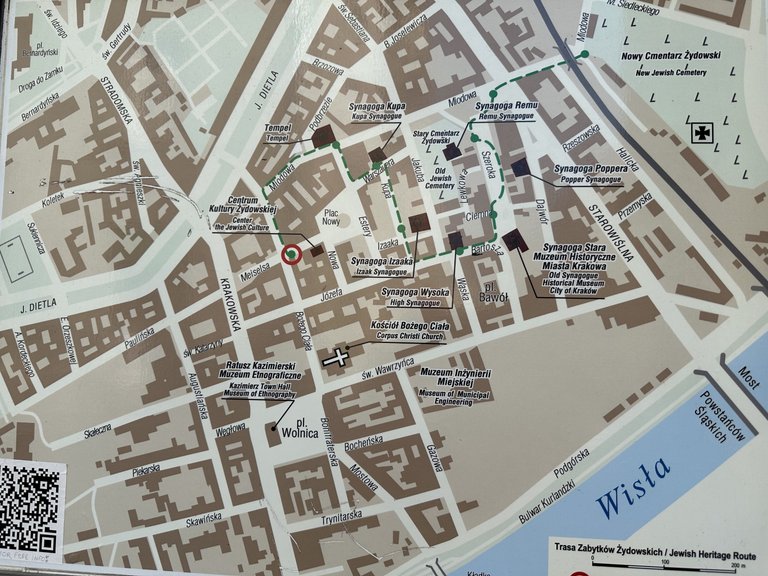
It eventually led us to the New Jewish cemetery.
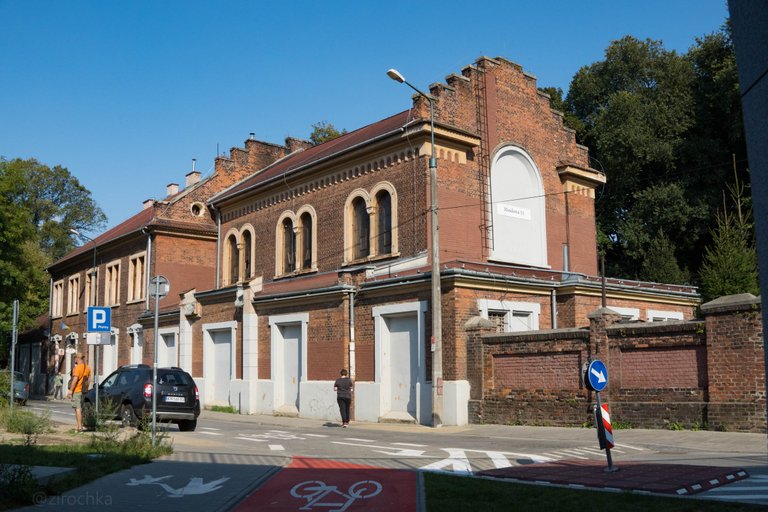
The "New Jewish Cemetery" which was founded in 1800. Apparently, there were other cemeteries at the time of its founding, and this one was new. Let's examine it in a slow pace and with great respect for the dead.
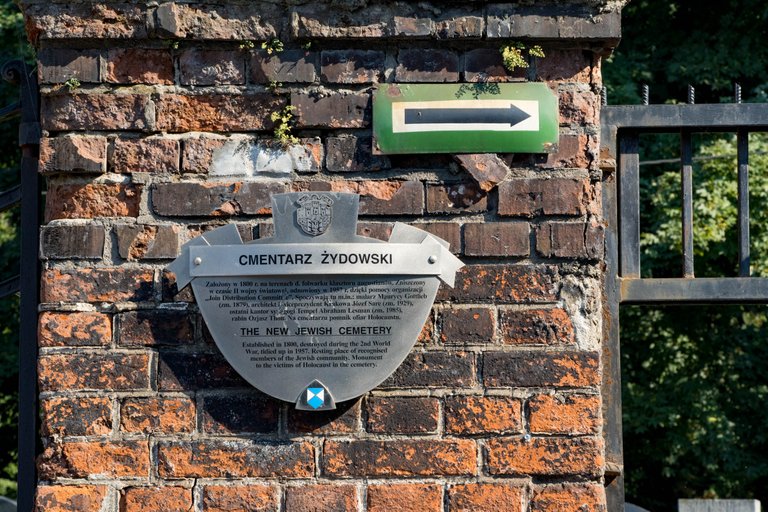

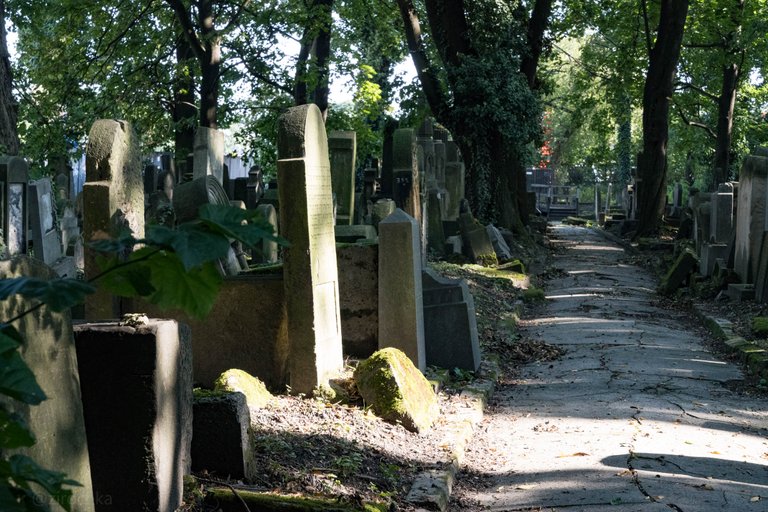
It was a sunny day, but there was a lot of shade from the tall trees. We went at random. Some parts of the cemetery were completely overgrown with ivy. Other parts were being cleared and landscaped. It was very nice to see.
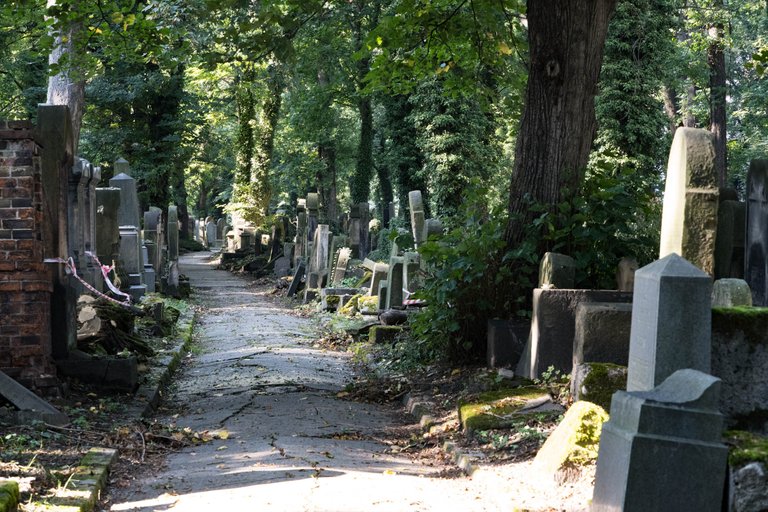
My husband certainly wouldn't want to explore every nook and cranny. He gets bored quickly. So I tried to head in the direction where the older matzevot might be.
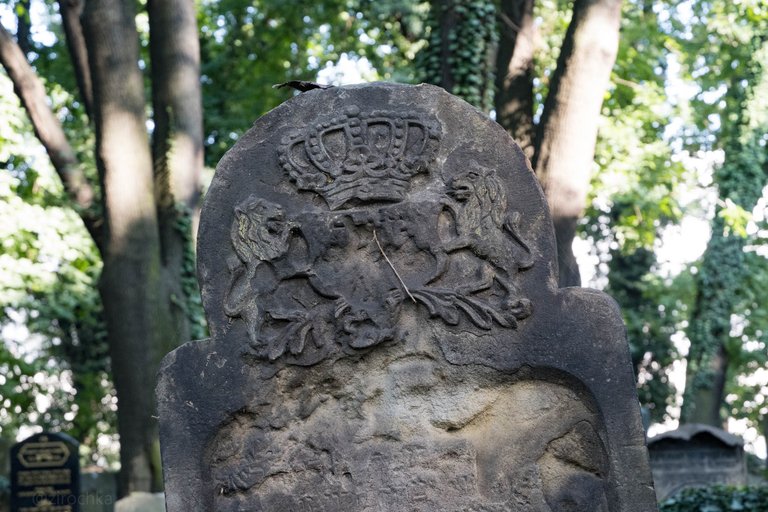
The Lion is perhaps the most popular image on matzevot. This is natural, because the lion represents the Jewish people. The lion is a symbol of the tribe of Judah. After the death of King Solomon, the Jewish state was divided into Judah and Israel. The tribes of Judah and Benjamin ended up in Judah. The other ten tribes were lost after the Assyrian king Sargon II captured the capital of the Kingdom of Israel, Samaria, and exiled its inhabitants. In Ukraine, we saw the duel of the Lion and the Unicorn. This duel reminds us of the ancient enmity between the two kingdoms and the hope for the unification of all 12 tribes.
The symbol of The Crown is associated with royalty and, in a broader sense, was often used as a sign of the deceased's high status or achievement in any of several areas. The inspiration for the use of this symbol on matzevs was a Talmudic expression: "There are three crowns - the crown of Torah (keter torah), the crown of priesthood and the crown of sovereignty (keter kehuna) - but the crown of a good name (keter shem tov) crowns them all."
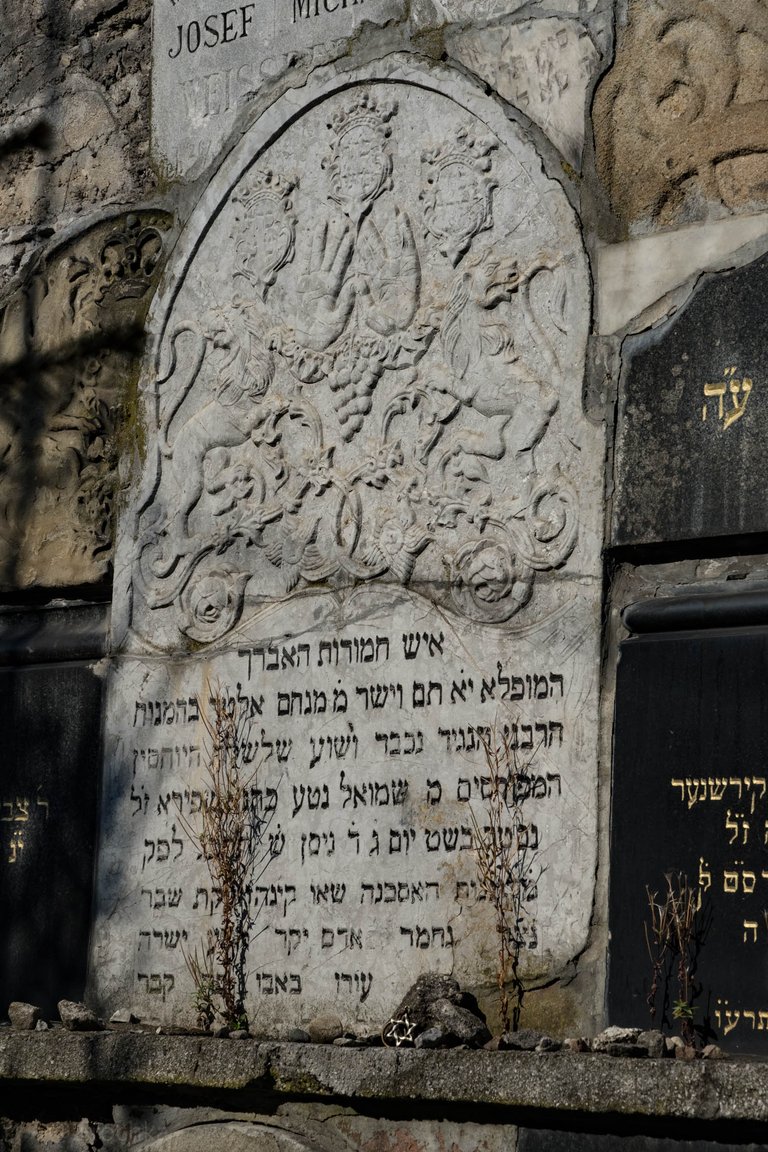
Here, in addition to the lions, the upper part depicts the blessing of the Cohens (or Aaron) - two palms with fingers folded in a special way. Each hand in this position resembles the Hebrew letter ש, representing Shaddai, Almighty God. Cohens are the class of priests in Judaism, descendants of the family of Aaron. Only the Cohens could perform the priesthood in the Temple. I heard a legend that not everyone can show it, but only those in whose veins the blood of the Cohens flows. Can you? 😉
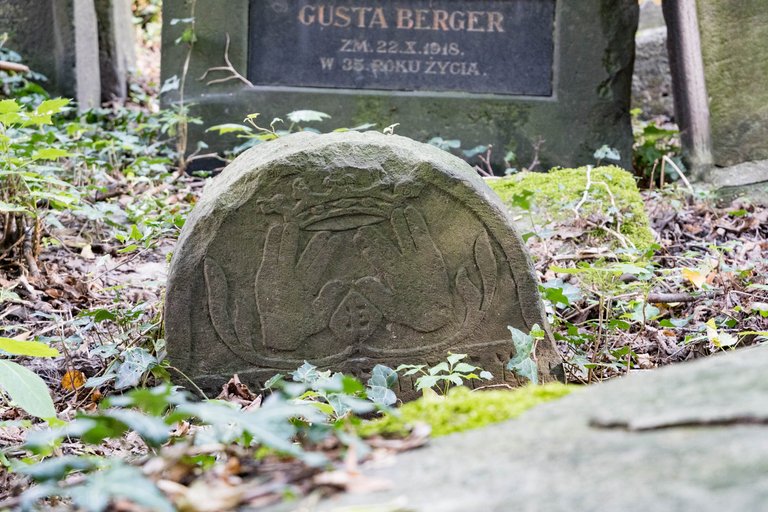

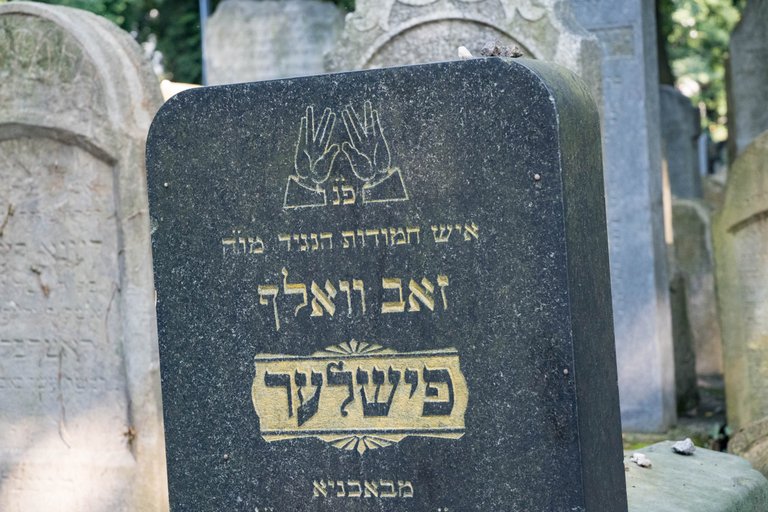

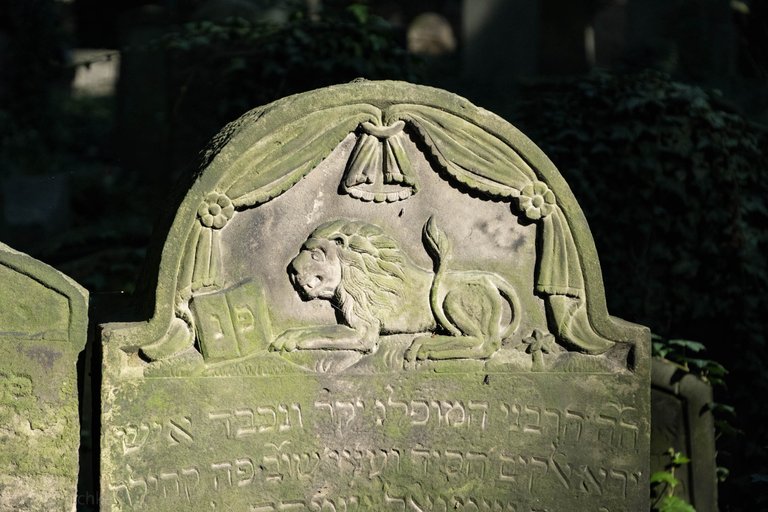
A lion was also depicted on the grave of a man named Lev. The two letters depicted on the pages of an open book are read as "here rests."
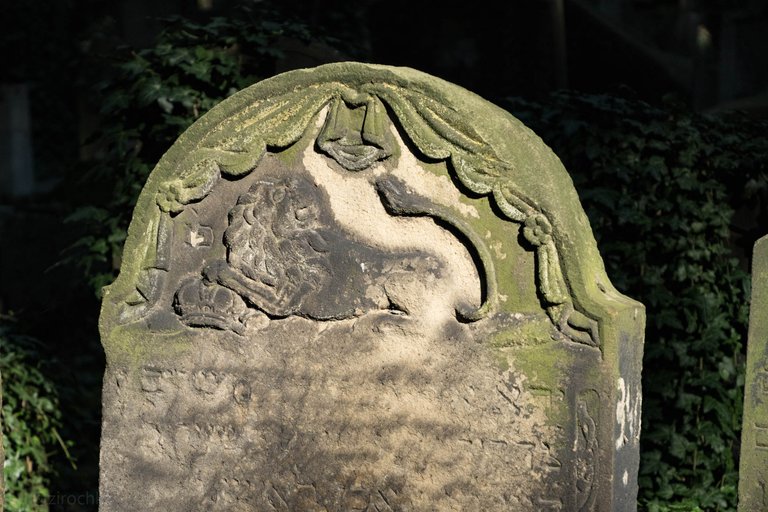

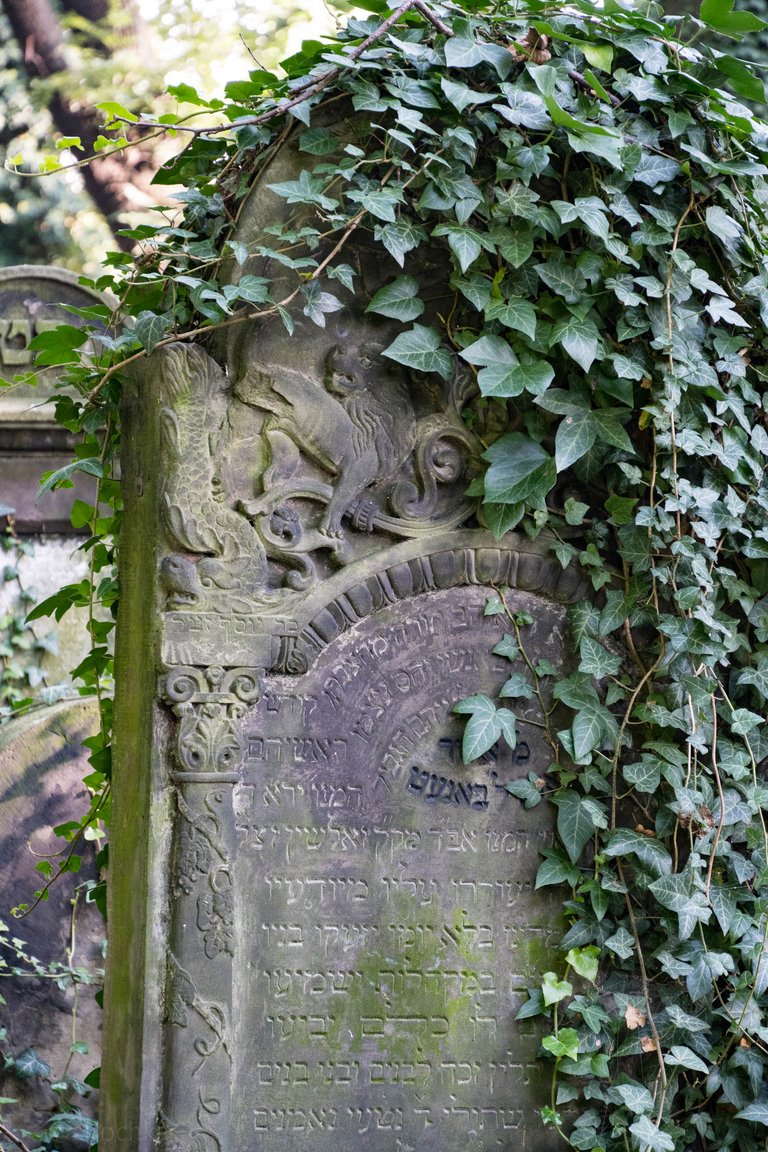
The Fish is the name Fischla or Fischel.
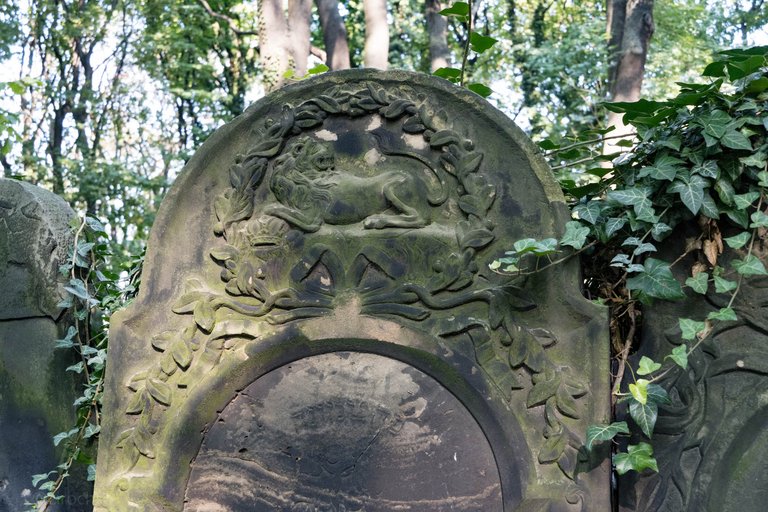

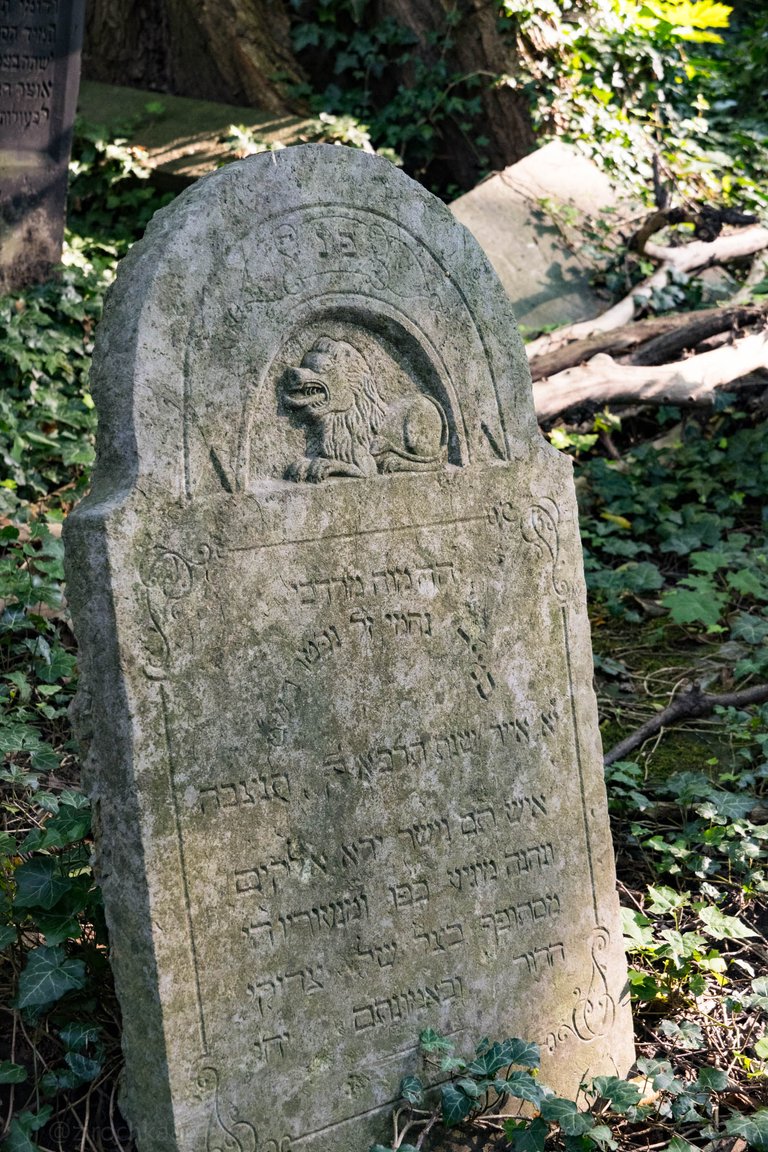

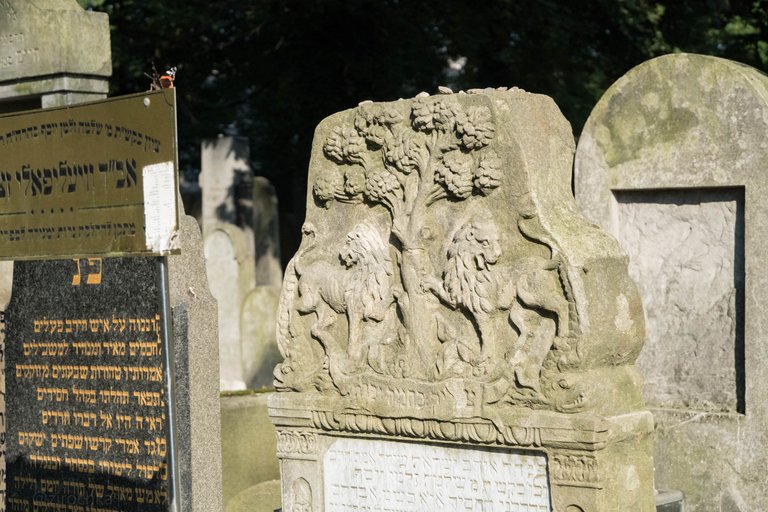
Lions on either side of the Tree of Knowledge or Tree of Life.
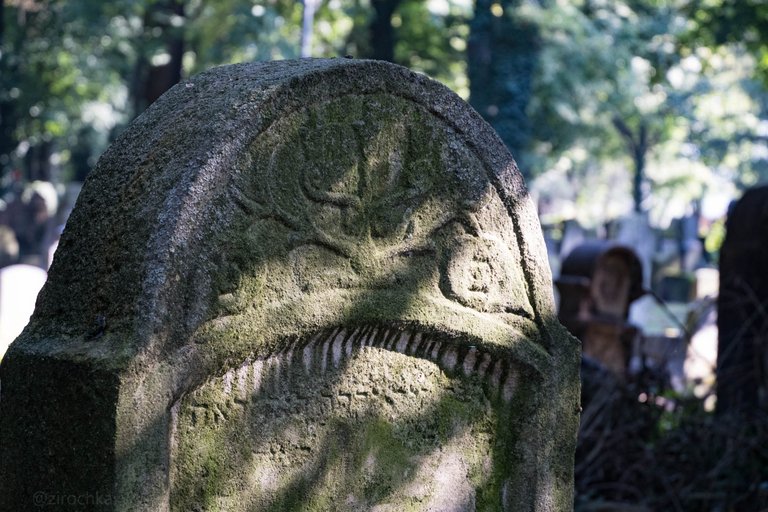

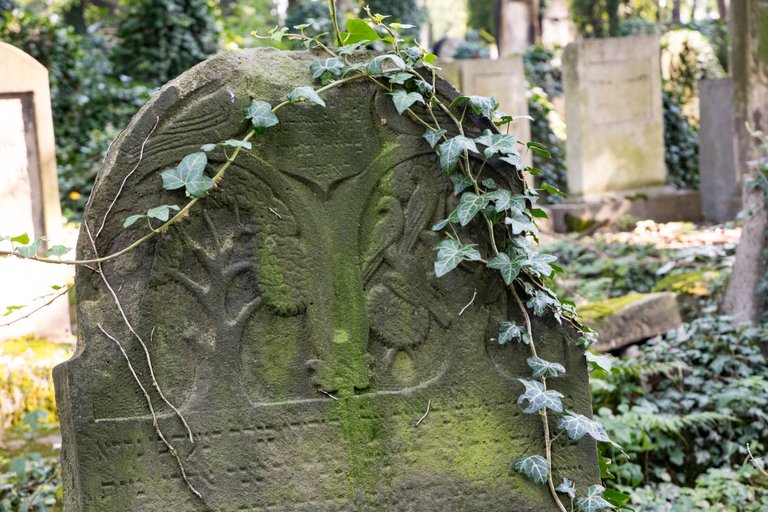
Birds. These are female names Feigl and Tzipora. They also meant a woman - the keeper of the home nest.
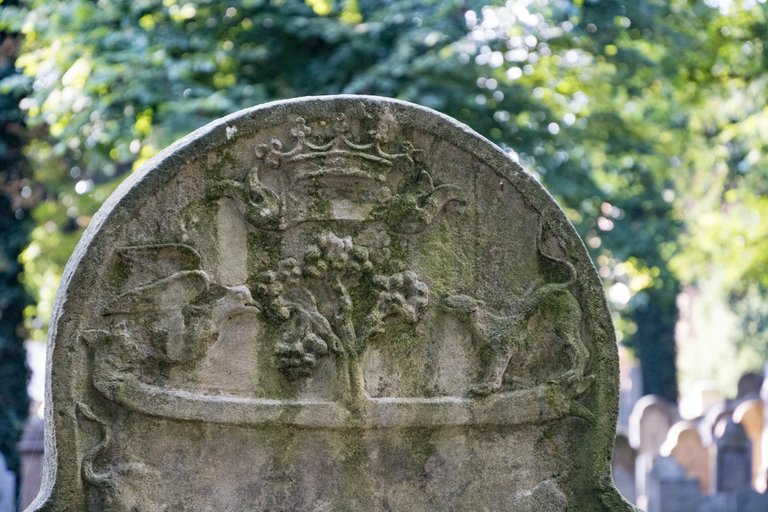
And this image is extremely interesting. On the left you see a dove, and on the right someone from the cat family. I couldn't find the meaning of cat or panther anywhere. This is so curious!
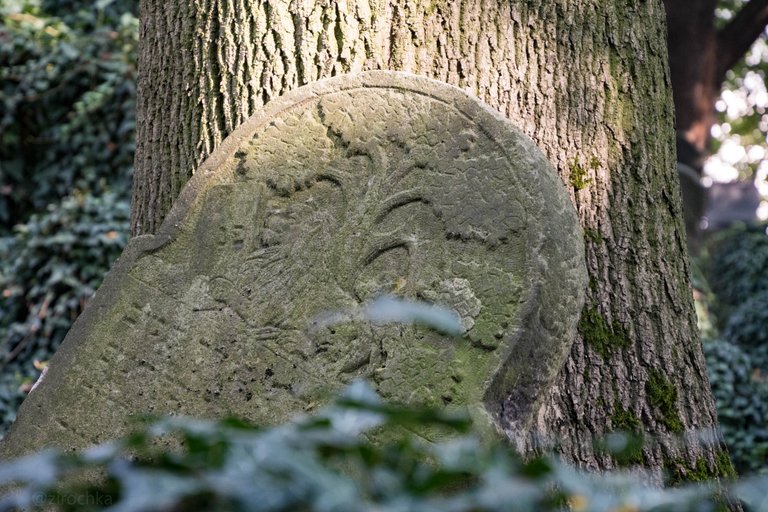

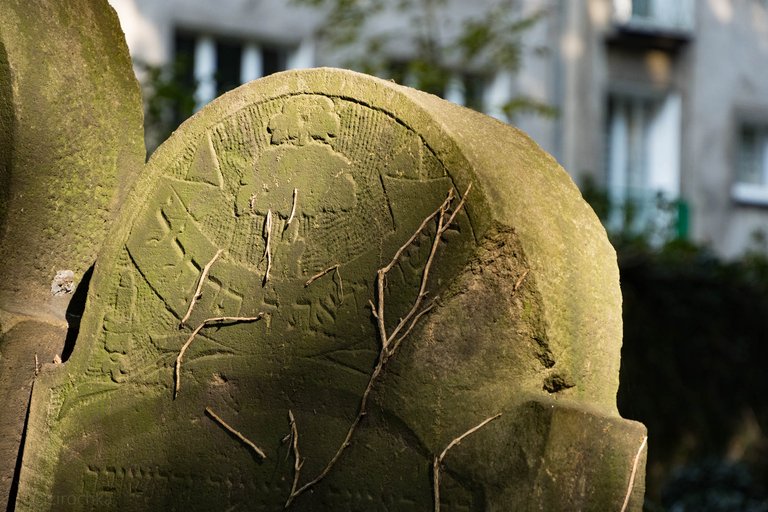

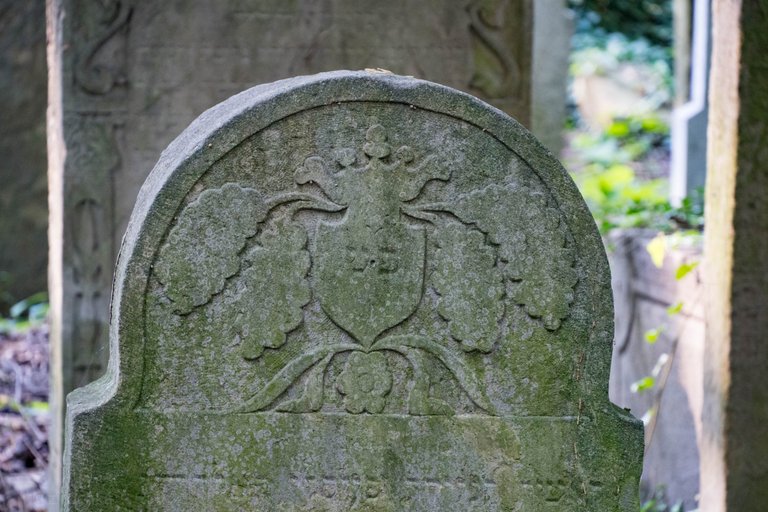

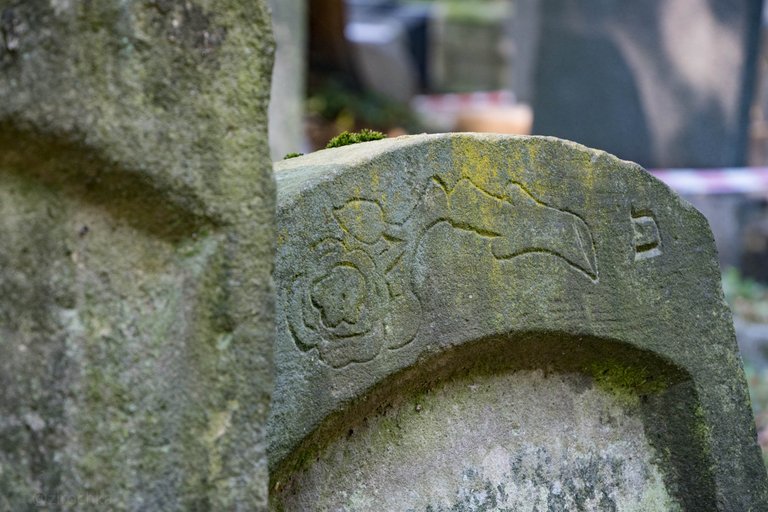
I would suggest that this flower is a rose which points to the name - Rose.
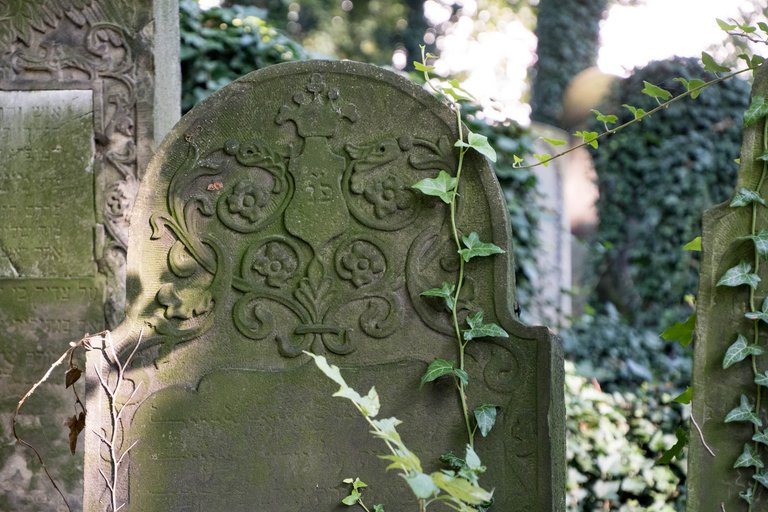


Luxurious work. A large crown in the center, many beautiful flowers and birds - 3 above the crown and two next to them, as if they had hatched from a flower. I think she was the mother of a large family and a wealthy one at that.
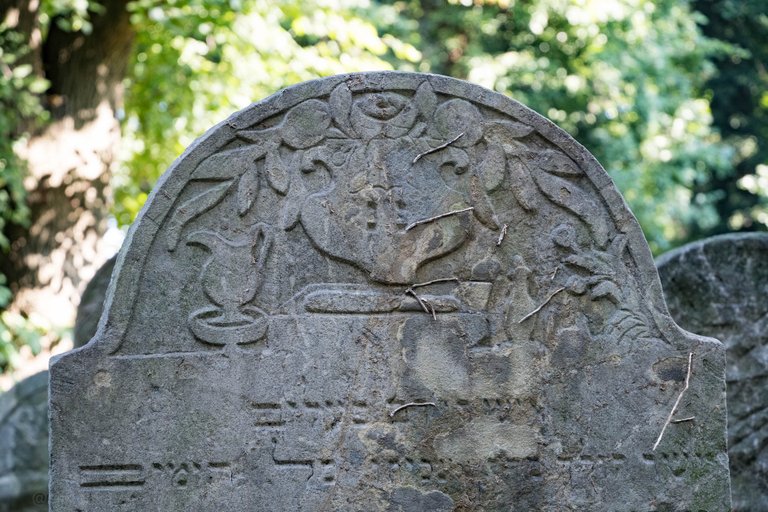
The Levite Pitcher. The Levites were descendants of the tribe of Levi who served in the Temple as singers, musicians, guards, and prepared animals for sacrifice. They were priests of a lower rank than the Cohens. The task most associated with the Levites is the ritual washing of the Cohens' hands before the priestly blessing.
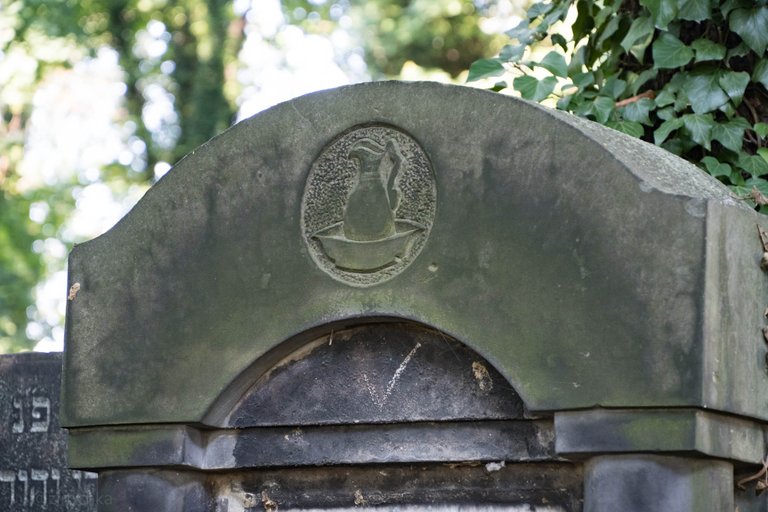



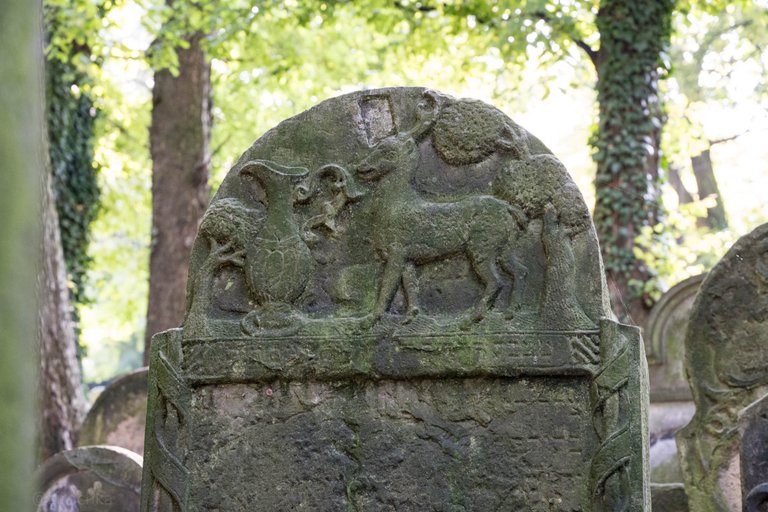
The Deer may represent the names Zvi and Hirsch. I think that was the name of this descendant of Levi.
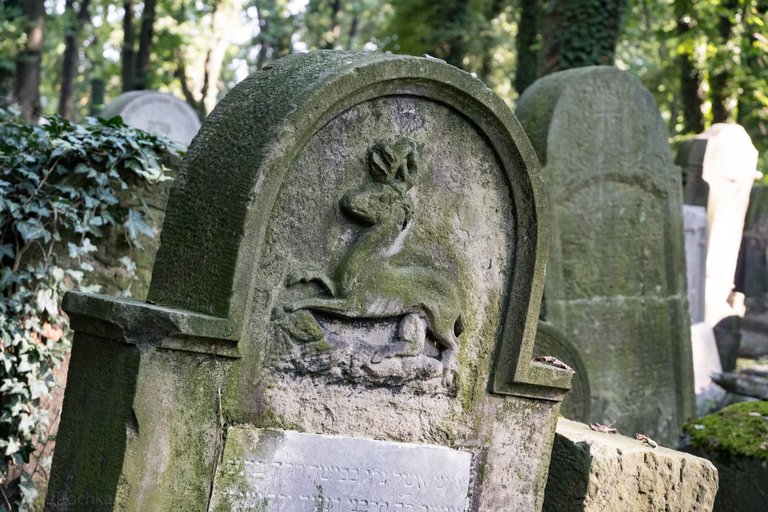


Serene beauty...
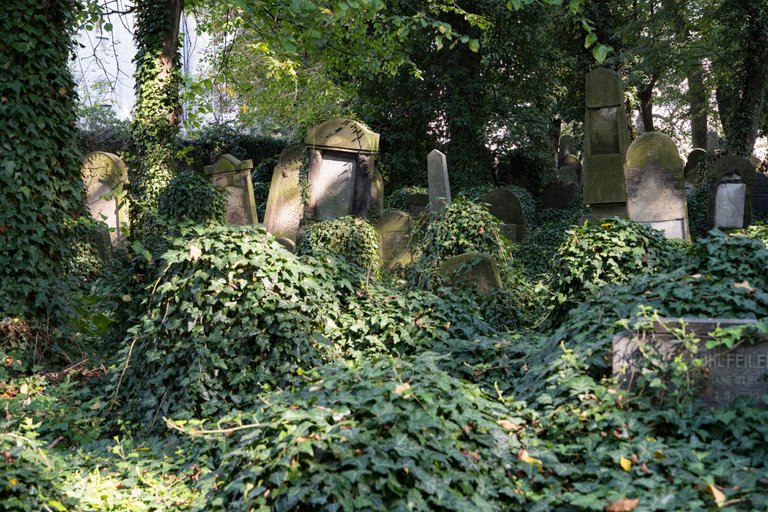
As I said, some matzevot are completely hidden under thickets of ivy. They are waiting for their time.
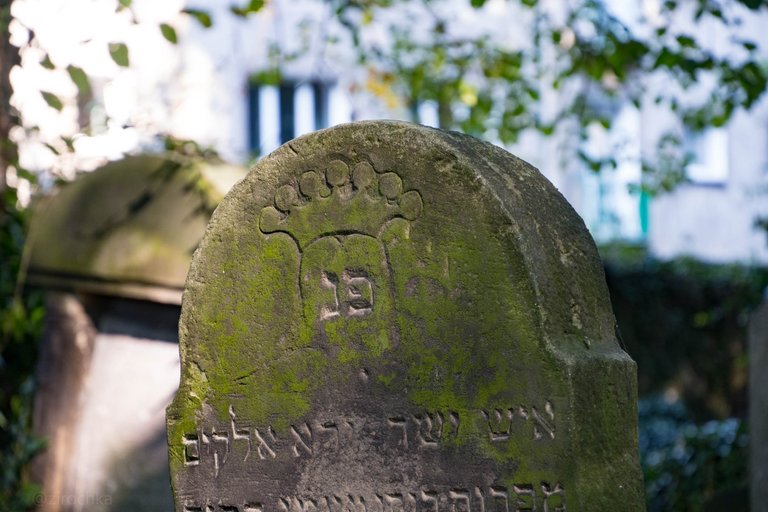

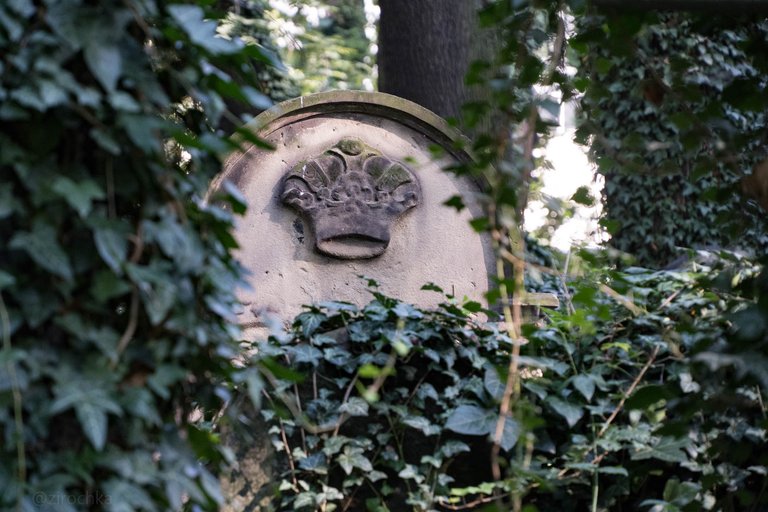

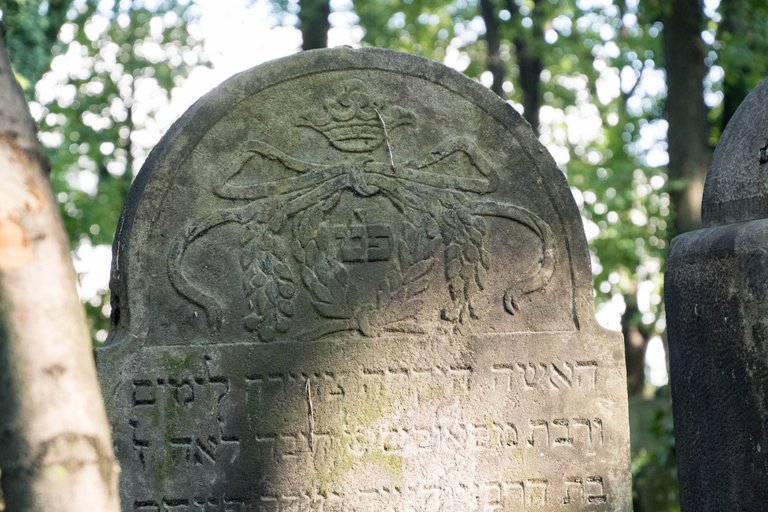

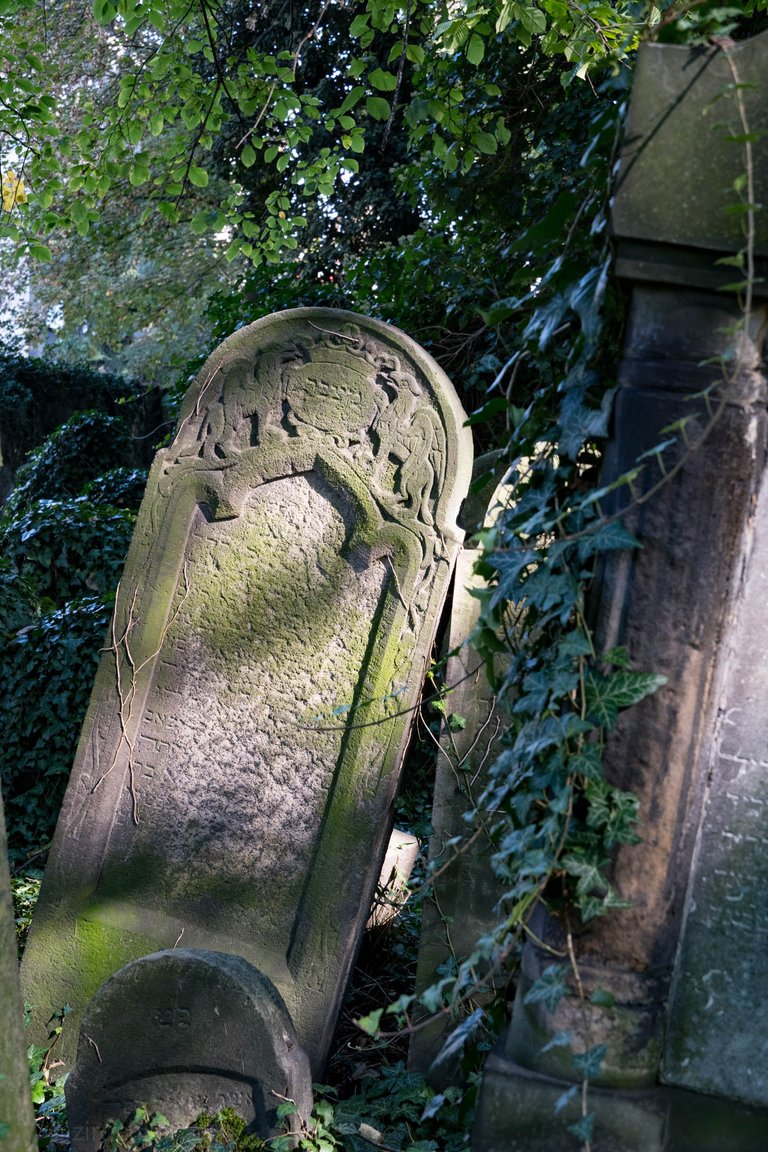
Interesting and unusual are bas-reliefs with Griffins. These are fantastic animals with the body of a lion, the head and wings of an eagle. Griffins usually symbolize guardians.
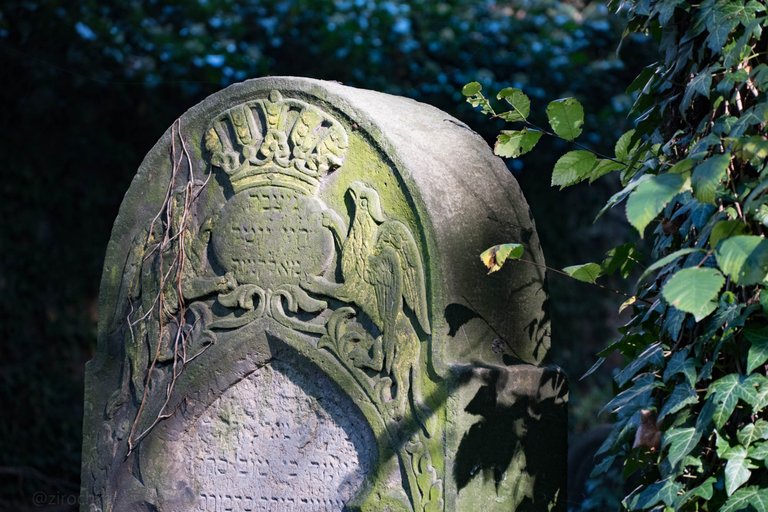
A Crown and Griffins.
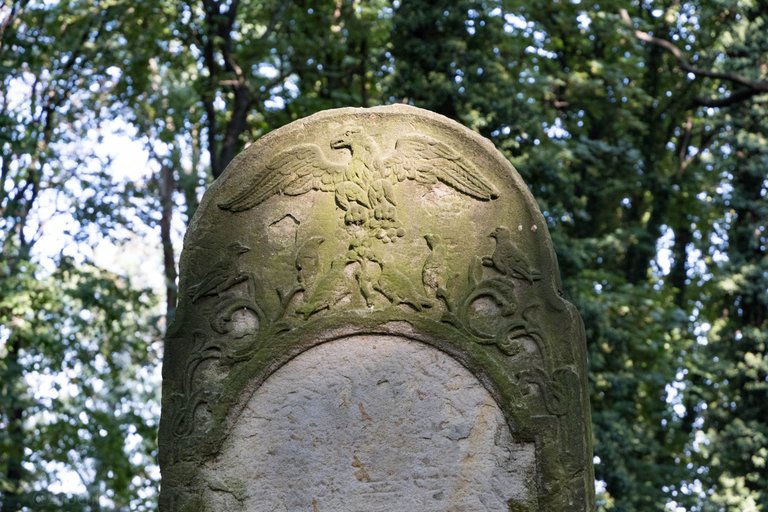
Here it is. The Eagle.
In Jewish tradition, the eagle is a symbol of God and his care for people. What else can be added...
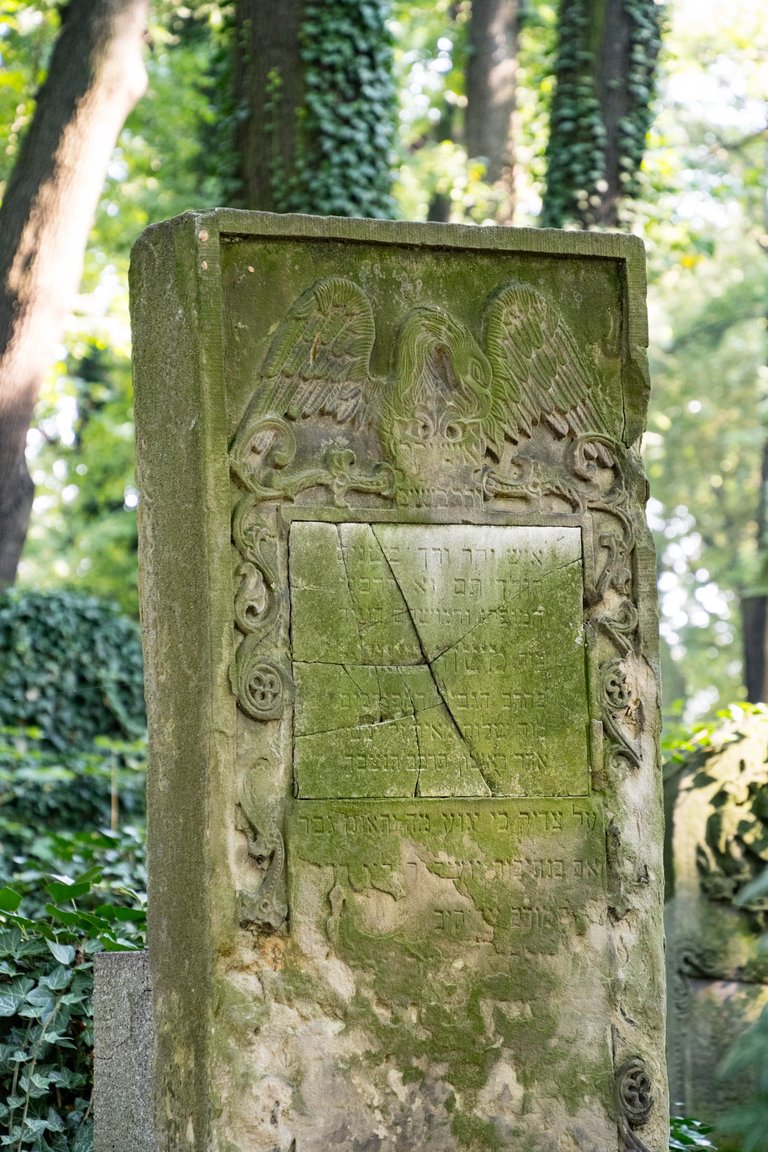
This looks more like a Swan than an Eagle, as for me. If so, I have no clue what it means.
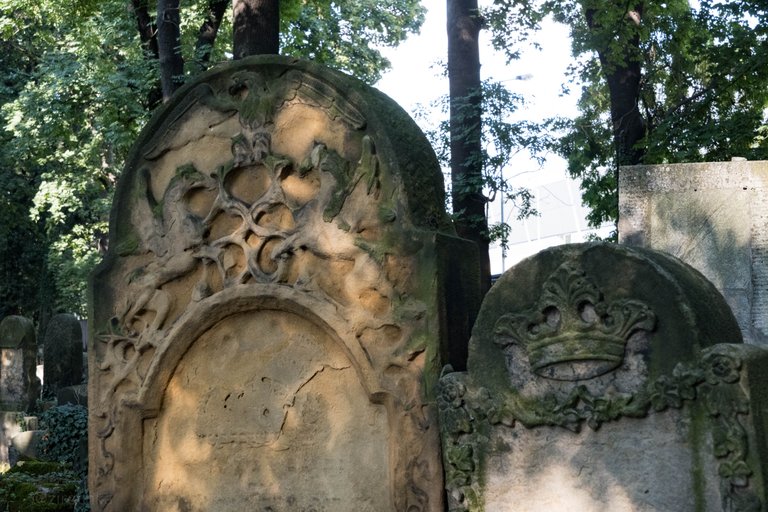
Two beautiful griffins with spread wings and an eagle above them.
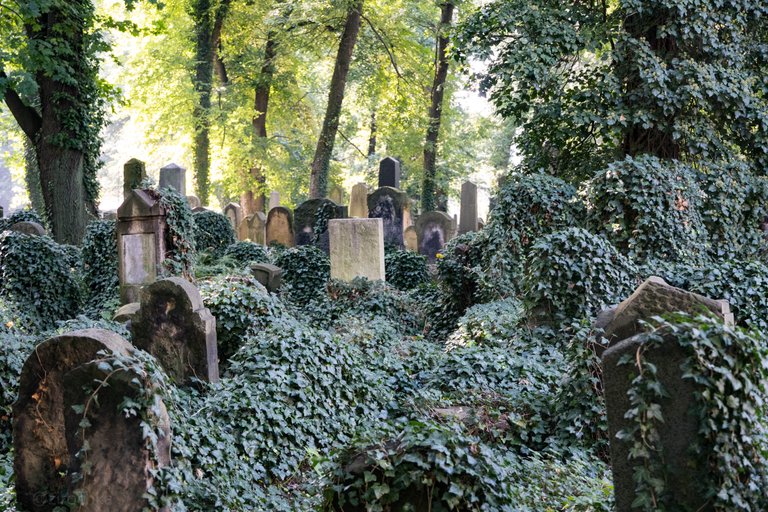

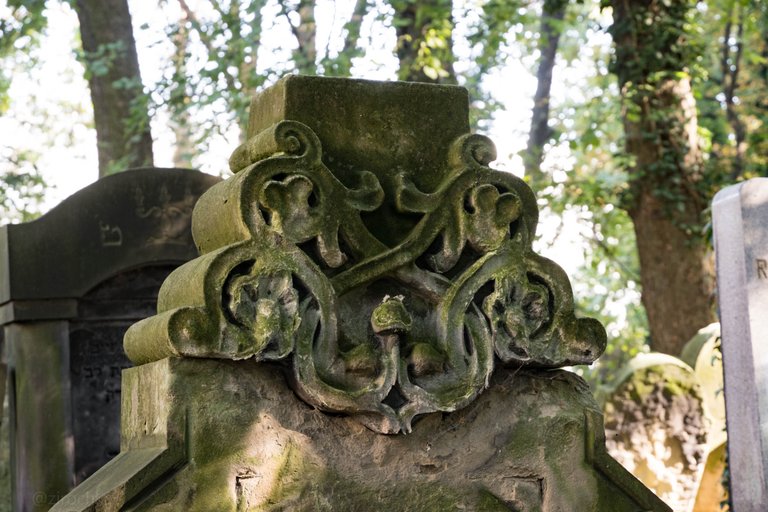

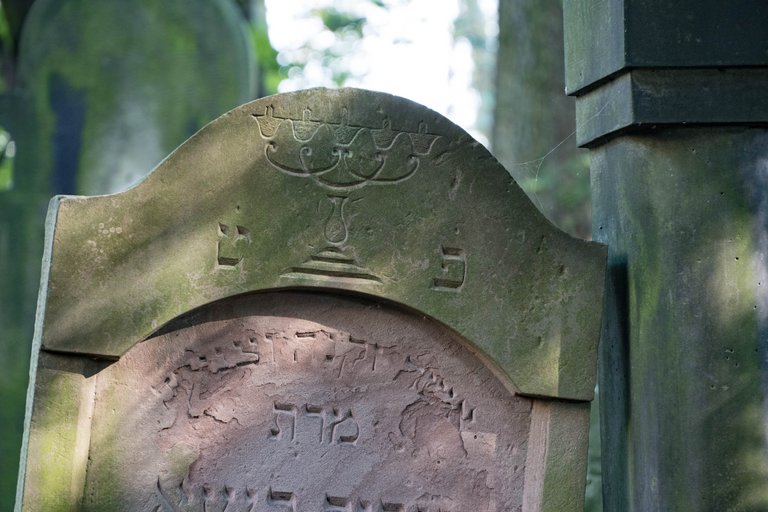
The Menorah has always been a symbol of Judaism. The Mogendovid (six-pointed star) began to be widely used only at the end of the 19th century. Before that, it was just an ancient symbol. Now this symbol is even on the flag of Israel.
The carving is very delicate, resembling a drawing and handwriting.
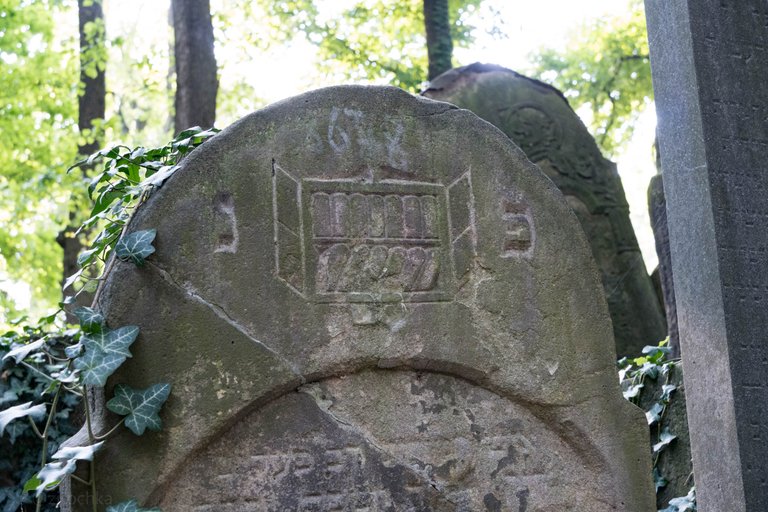
Torah. The deceased was a lover of books, possibly a Talmudist.
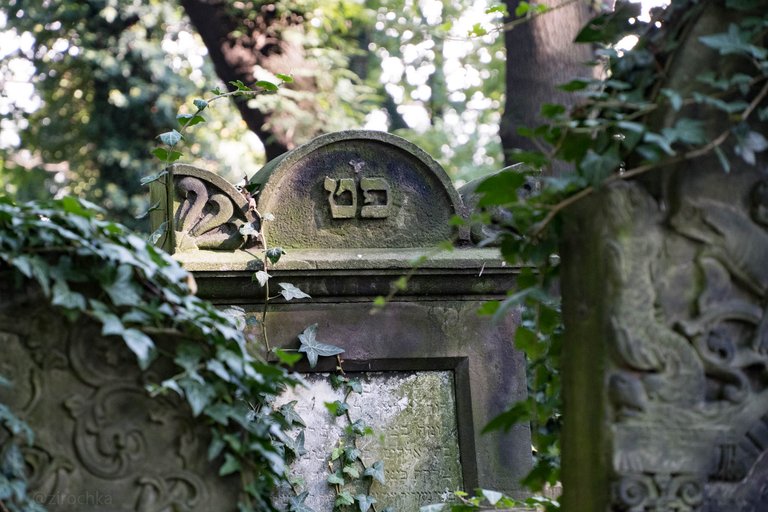

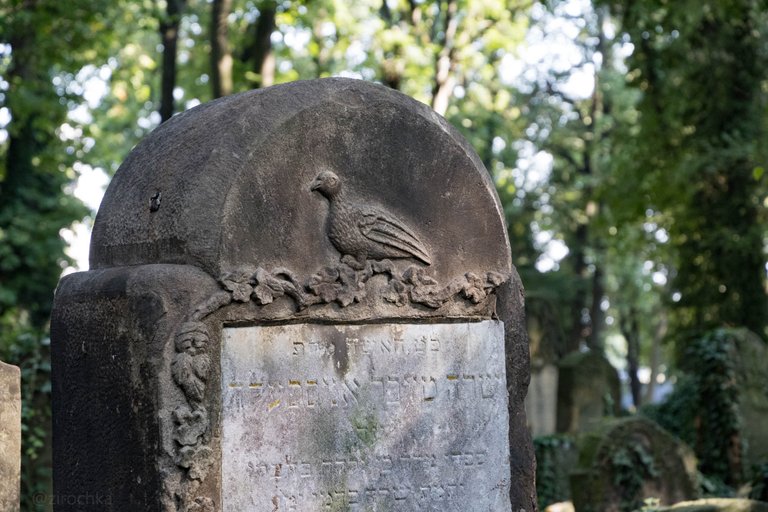
The Dove may mean the name Jonah.
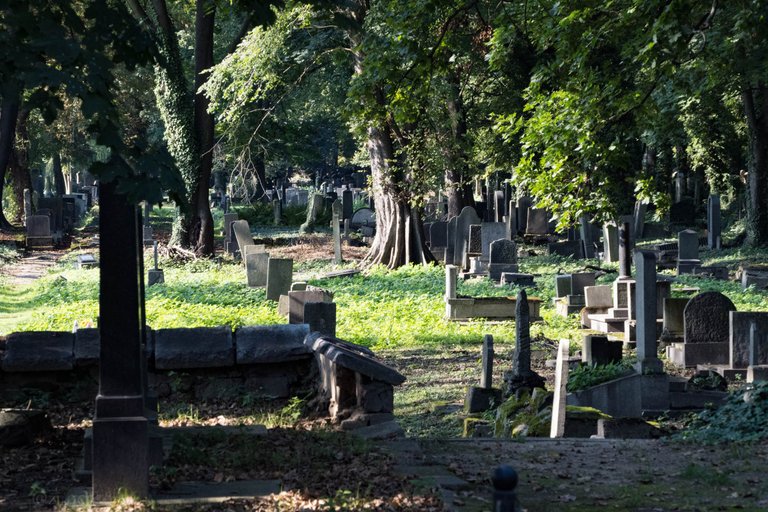
And this is the more modern part. It is not so overgrown and cluttered. The graves here are better preserved and have a more modern look.
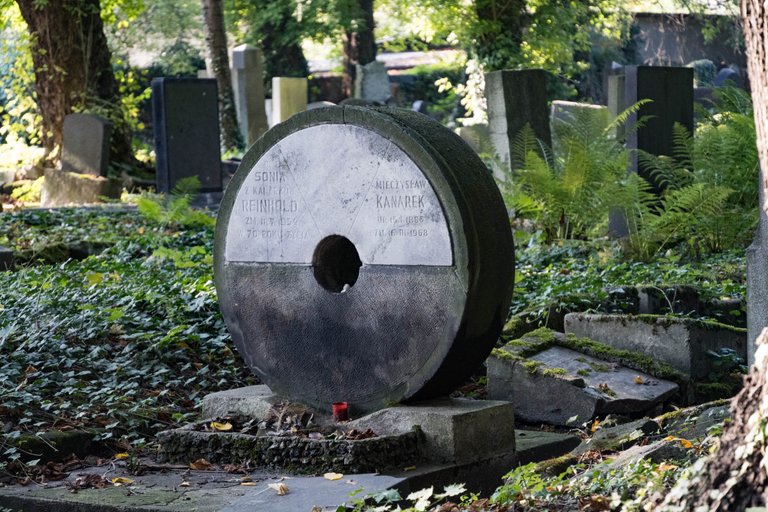
This one is very modern. What does it depict? Millstone comes to mind. It's a pity I don't know Hebrew.

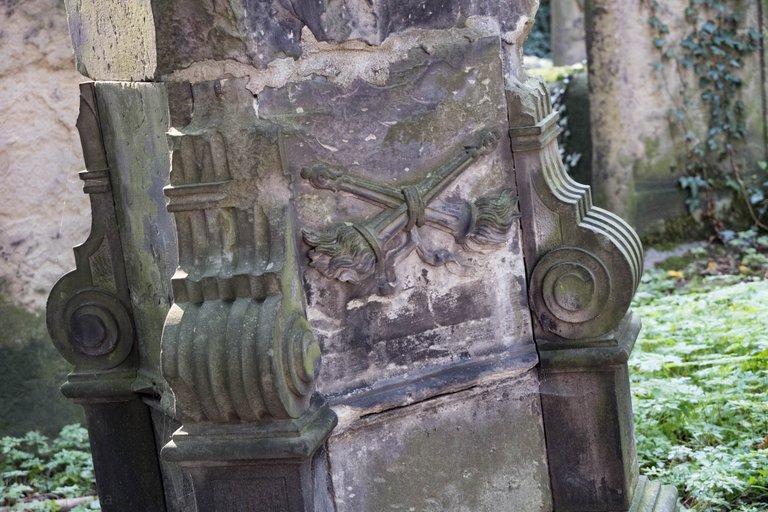
The crossed torches on the matzevah have several symbolic meanings, depending on the context and tradition. They are usually symbols associated with eternal memory, light, and the transition to eternal life. But the torches were not the main element. Something else was depicted above them, and it has not survived. During the fascist occupation, the cemetery was looted, valuable stonework were sold, and many artistic elements were destroyed. The Bolsheviks did the same with Ukrainian cemeteries.

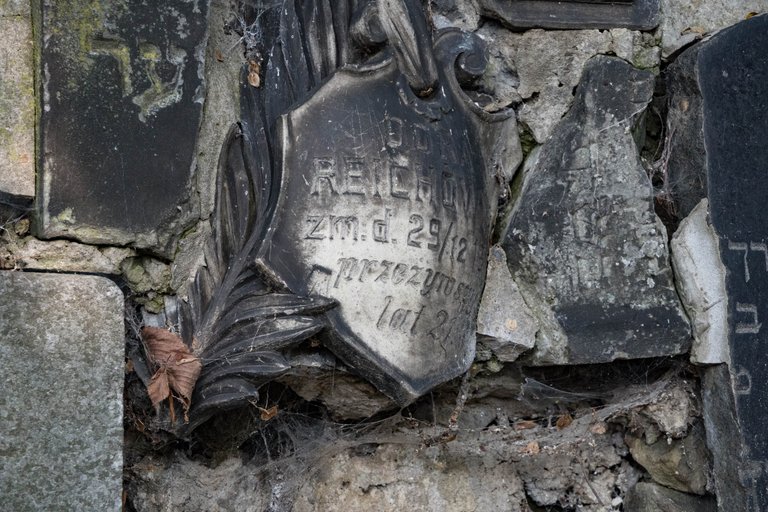

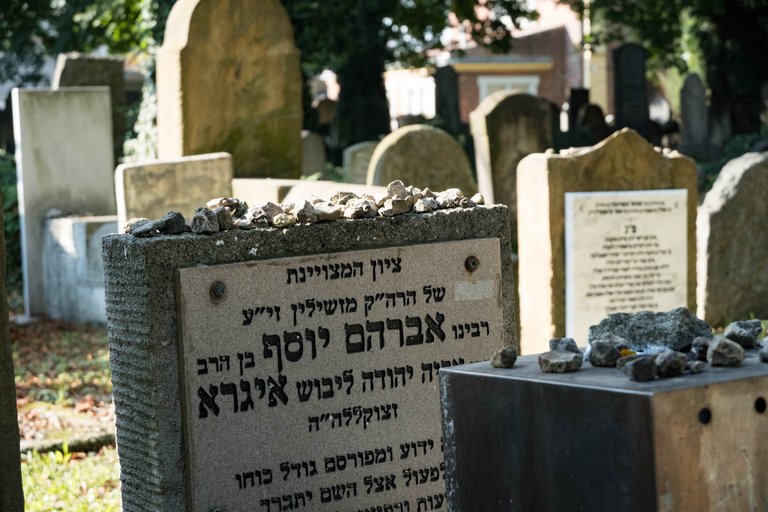
Stones as a sign that the grave was visited. "A time to throw stones and a time to gather stones"...
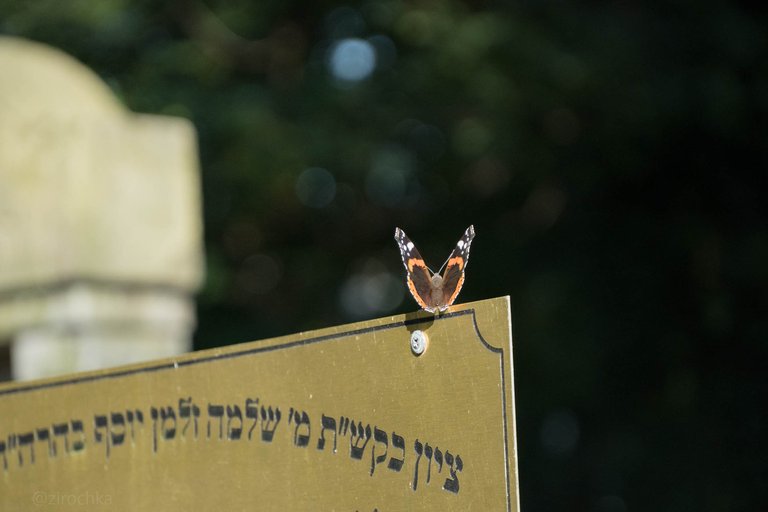
We are not the only visitors here. 🙂

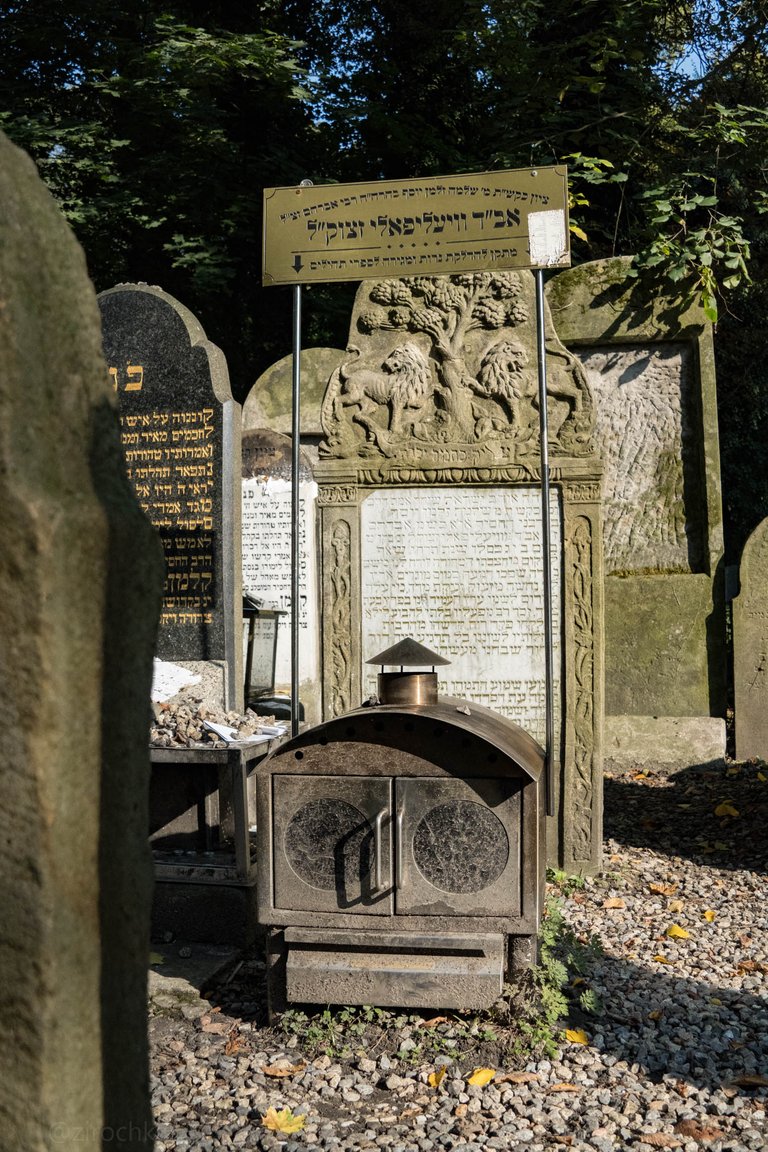
This small portable stove (it's a stove, right?) is obviously connected to a certain tradition. Maybe it symbolizes warmth and homeliness, or the completion of the life cycle, or fire could be a symbol of purification. I don't know.
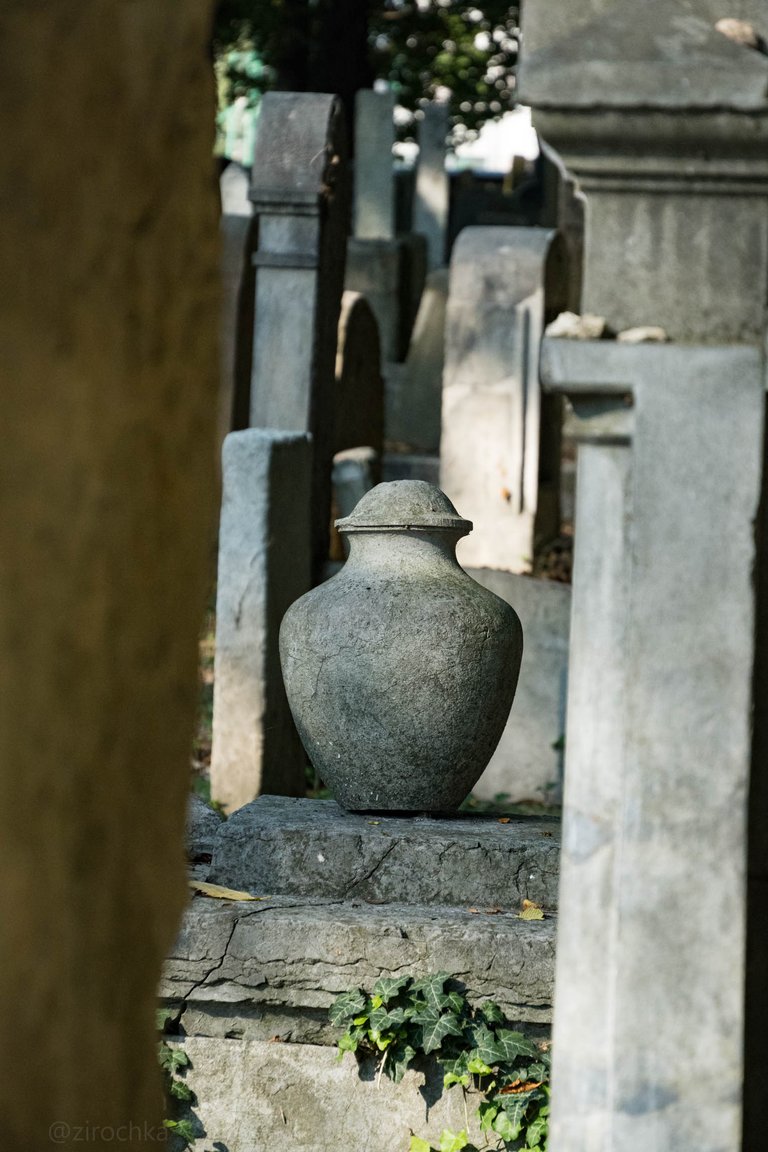

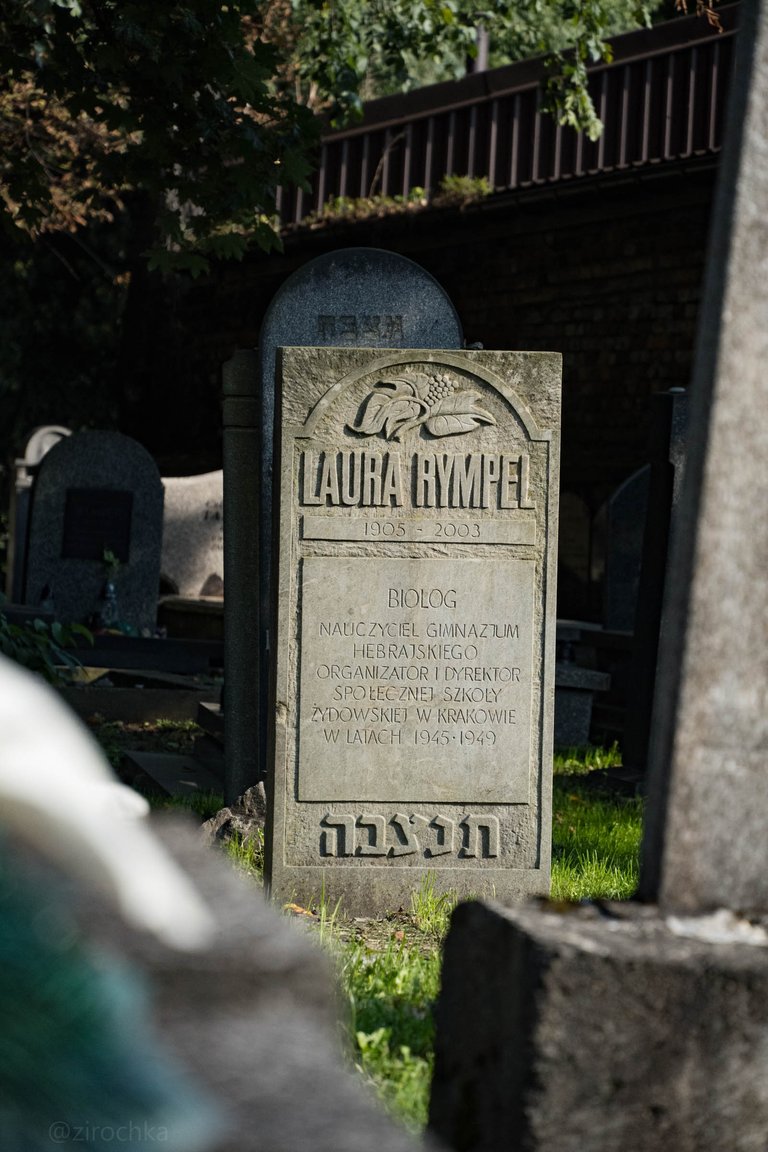

This is the end of today's research walk.
Thanks for your time!
See you around,
🌟 Another post. Another small victory. 🌟
[//]:# ([//]:# (!worldmappin 50.05355 lat 19.95223 long The New Jewish cemetery and its marvelous tombstones d3scr))
